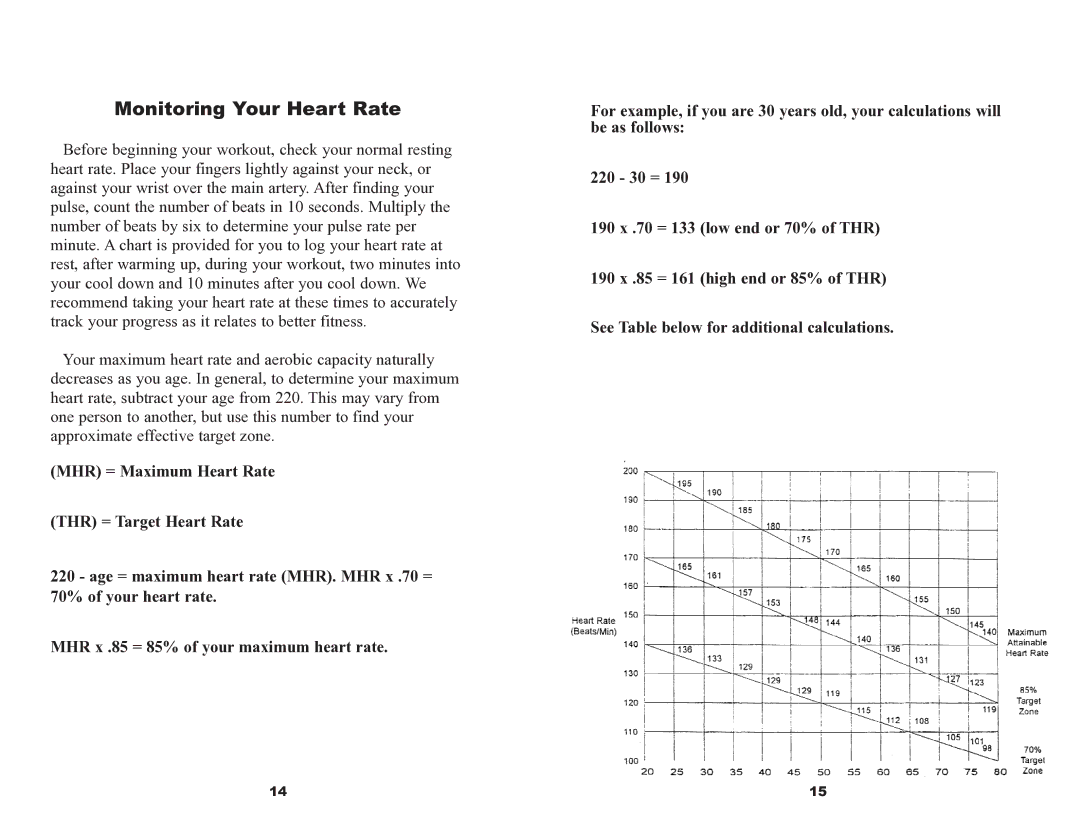
Monitoring Your Heart Rate
Before beginning your workout, check your normal resting heart rate. Place your fingers lightly against your neck, or against your wrist over the main artery. After finding your pulse, count the number of beats in 10 seconds. Multiply the number of beats by six to determine your pulse rate per minute. A chart is provided for you to log your heart rate at rest, after warming up, during your workout, two minutes into your cool down and 10 minutes after you cool down. We recommend taking your heart rate at these times to accurately track your progress as it relates to better fitness.
Your maximum heart rate and aerobic capacity naturally decreases as you age. In general, to determine your maximum heart rate, subtract your age from 220. This may vary from one person to another, but use this number to find your approximate effective target zone.
(MHR) = Maximum Heart Rate
(THR) = Target Heart Rate
220 - age = maximum heart rate (MHR). MHR x .70 = 70% of your heart rate.
MHR x .85 = 85% of your maximum heart rate.
For example, if you are 30 years old, your calculations will be as follows:
220 - 30 = 190
190 x .70 = 133 (low end or 70% of THR)
190 x .85 = 161 (high end or 85% of THR)
See Table below for additional calculations.
14 | 15 |
